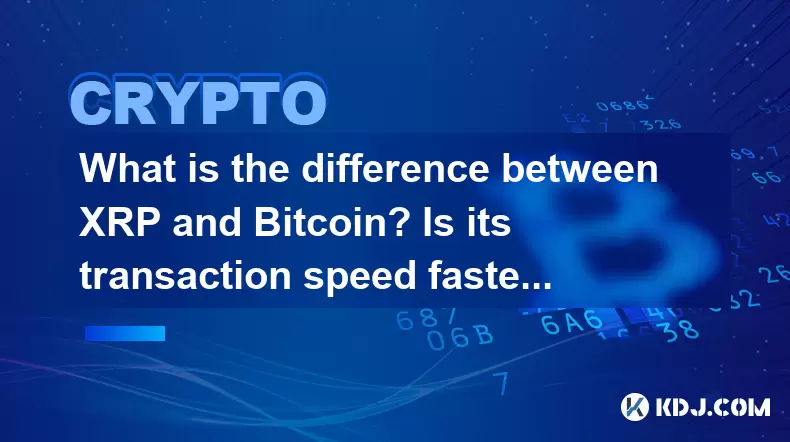-
 Bitcoin
Bitcoin $105,953.9980
3.06% -
 Ethereum
Ethereum $2,445.3292
6.68% -
 Tether USDt
Tether USDt $1.0006
-0.03% -
 XRP
XRP $2.1968
7.03% -
 BNB
BNB $643.2903
2.13% -
 Solana
Solana $144.2799
3.82% -
 USDC
USDC $1.0000
-0.03% -
 TRON
TRON $0.2739
0.49% -
 Dogecoin
Dogecoin $0.1642
4.47% -
 Cardano
Cardano $0.5834
5.49% -
 Hyperliquid
Hyperliquid $38.0741
2.80% -
 Sui
Sui $2.7741
7.56% -
 Chainlink
Chainlink $13.4107
11.26% -
 Bitcoin Cash
Bitcoin Cash $450.4828
-0.61% -
 UNUS SED LEO
UNUS SED LEO $9.1301
0.64% -
 Stellar
Stellar $0.2476
5.49% -
 Avalanche
Avalanche $18.0637
5.09% -
 Toncoin
Toncoin $2.9066
2.43% -
 Shiba Inu
Shiba Inu $0.0...01160
4.01% -
 Hedera
Hedera $0.1527
8.00% -
 Litecoin
Litecoin $84.6122
2.37% -
 Monero
Monero $317.6076
5.76% -
 Ethena USDe
Ethena USDe $1.0008
0.02% -
 Polkadot
Polkadot $3.4519
5.27% -
 Dai
Dai $1.0000
-0.03% -
 Bitget Token
Bitget Token $4.2835
5.62% -
 Uniswap
Uniswap $7.0443
9.78% -
 Pepe
Pepe $0.0...09964
7.41% -
 Pi
Pi $0.5391
4.64% -
 Aave
Aave $264.1743
11.26%
What is the difference between XRP and Bitcoin? Is its transaction speed faster?
XRP, designed for fast cross-border payments, processes transactions in 3-5 seconds, while Bitcoin, a decentralized digital currency, takes 10 minutes to an hour.
May 10, 2025 at 04:21 am

XRP and Bitcoin are two distinct cryptocurrencies that serve different purposes within the blockchain ecosystem. XRP, often referred to as Ripple, was created by Ripple Labs with the primary goal of facilitating fast and efficient cross-border payments. On the other hand, Bitcoin was introduced in 2009 by an anonymous person or group under the pseudonym Satoshi Nakamoto, aiming to provide a decentralized digital currency that operates independently of any central authority. This fundamental difference in purpose is the starting point for understanding the distinctions between XRP and Bitcoin.
Transaction Speed
One of the most notable differences between XRP and Bitcoin is their transaction speed. XRP is designed to process transactions quickly, with an average confirmation time of just 3-5 seconds. This rapid processing time makes XRP an attractive option for financial institutions looking to streamline their international payment processes. In contrast, Bitcoin transactions can take anywhere from 10 minutes to an hour to be confirmed, depending on network congestion and the transaction fee paid. This difference in speed is primarily due to the underlying technology and consensus mechanisms used by each cryptocurrency.
Scalability
Scalability is another area where XRP and Bitcoin differ significantly. XRP's ledger can handle up to 1,500 transactions per second (TPS), which is considerably higher than Bitcoin's capacity. Bitcoin's network can process around 7 TPS, which has led to issues with scalability and increased transaction fees during periods of high demand. XRP's higher transaction throughput makes it more suitable for large-scale financial applications, whereas Bitcoin's lower throughput can result in slower transaction processing times and higher fees when the network is busy.
Consensus Mechanism
The consensus mechanism used by each cryptocurrency also plays a crucial role in their performance and security. XRP uses a consensus protocol called the Ripple Protocol consensus algorithm (RPCA), which relies on a network of trusted validators to reach consensus on the state of the ledger. This approach allows for faster transaction processing and lower energy consumption compared to Bitcoin. Bitcoin, on the other hand, uses a proof-of-work (PoW) consensus mechanism, where miners compete to solve complex mathematical puzzles to validate transactions and add them to the blockchain. While PoW is highly secure, it is also energy-intensive and can lead to slower transaction times.
Use Cases
The intended use cases for XRP and Bitcoin also differ significantly. XRP is primarily used for facilitating cross-border payments and liquidity provision in financial markets. Its fast transaction times and low fees make it an ideal solution for banks and financial institutions looking to improve their payment infrastructure. Bitcoin, however, is often used as a store of value and a means of exchange. Many people view Bitcoin as "digital gold" and use it to hedge against inflation or as an alternative investment. While Bitcoin can be used for payments, its slower transaction times and higher fees make it less suitable for everyday transactions compared to XRP.
Market Position and Adoption
The market position and adoption of XRP and Bitcoin also differ. Bitcoin is the most widely recognized and adopted cryptocurrency, with a large market capitalization and a significant presence in the financial world. It is accepted by numerous merchants and is available on almost all cryptocurrency exchanges. XRP, while still a major player in the cryptocurrency market, has a more niche focus on the financial sector. It has gained traction among banks and financial institutions but has faced regulatory challenges that have impacted its adoption and market position.
Security and Decentralization
Security and decentralization are important considerations when comparing XRP and Bitcoin. Bitcoin's PoW consensus mechanism is considered highly secure, as it requires significant computational power to launch a successful attack on the network. However, this security comes at the cost of decentralization, as mining power is concentrated in the hands of a few large mining pools. XRP's RPCA consensus mechanism is also secure but relies on a network of trusted validators, which some argue is less decentralized than Bitcoin's approach. However, XRP's design allows for faster transaction processing and lower energy consumption, making it an attractive option for certain use cases.
Frequently Asked Questions
Q: Can XRP be mined like Bitcoin?
A: No, XRP cannot be mined like Bitcoin. Unlike Bitcoin, which uses a proof-of-work consensus mechanism and allows users to mine new coins, XRP was pre-mined in its entirety by Ripple Labs. The total supply of XRP is fixed at 100 billion, and new XRP is not created through mining.
Q: Are XRP and Bitcoin subject to the same regulatory scrutiny?
A: No, XRP and Bitcoin face different levels of regulatory scrutiny. Bitcoin is generally viewed as a decentralized cryptocurrency and has been subject to regulatory oversight in various jurisdictions, but it is widely accepted and traded. XRP, on the other hand, has faced significant regulatory challenges, particularly in the United States, where the Securities and Exchange Commission (SEC) has taken legal action against Ripple Labs, alleging that XRP is a security.
Q: Can I use XRP and Bitcoin interchangeably for payments?
A: While both XRP and Bitcoin can be used for payments, they are not interchangeable due to their different transaction speeds and fees. XRP is better suited for fast, low-cost transactions, making it ideal for cross-border payments and financial applications. Bitcoin, with its slower transaction times and higher fees, is less suitable for everyday payments but is often used as a store of value and for larger transactions.
Q: How do the energy consumption levels of XRP and Bitcoin compare?
A: XRP consumes significantly less energy than Bitcoin. Bitcoin's proof-of-work consensus mechanism requires miners to use substantial amounts of electricity to solve complex mathematical puzzles, leading to high energy consumption. In contrast, XRP's Ripple Protocol consensus algorithm relies on a network of validators and does not require the same level of computational power, resulting in much lower energy consumption.
Disclaimer:info@kdj.com
The information provided is not trading advice. kdj.com does not assume any responsibility for any investments made based on the information provided in this article. Cryptocurrencies are highly volatile and it is highly recommended that you invest with caution after thorough research!
If you believe that the content used on this website infringes your copyright, please contact us immediately (info@kdj.com) and we will delete it promptly.
- BlockDAG: The Cryptocurrency ROI Revolution
- 2025-06-25 06:45:12
- Layer 1 Crypto Token Presales: What's Hot in the NYC Crypto Scene?
- 2025-06-25 06:30:12
- Ethereum, Investors, and Memecoins: A Wild Ride on the Crypto Coaster
- 2025-06-25 06:30:12
- SEI Price Explodes: Is This Just the Beginning?
- 2025-06-25 07:05:13
- Meme Coins Mania: Arctic Pablo and the Hunt for Presale Gains
- 2025-06-25 06:50:13
- Mark Cuban, Meme Coins, and Scams: A Cautionary Tale
- 2025-06-25 07:05:13
Related knowledge

How to customize USDT TRC20 mining fees? Flexible adjustment tutorial
Jun 13,2025 at 01:42am
Understanding USDT TRC20 Mining FeesMining fees on the TRON (TRC20) network are essential for processing transactions. Unlike Bitcoin or Ethereum, where miners directly validate transactions, TRON uses a delegated proof-of-stake (DPoS) mechanism. However, users still need to pay bandwidth and energy fees, which are collectively referred to as 'mining fe...

USDT TRC20 transaction is stuck? Solution summary
Jun 14,2025 at 11:15pm
Understanding USDT TRC20 TransactionsWhen users mention that a USDT TRC20 transaction is stuck, they typically refer to a situation where the transfer of Tether (USDT) on the TRON blockchain has not been confirmed for an extended period. This issue may arise due to various reasons such as network congestion, insufficient transaction fees, or wallet-rela...

How to cancel USDT TRC20 unconfirmed transactions? Operation guide
Jun 13,2025 at 11:01pm
Understanding USDT TRC20 Unconfirmed TransactionsWhen dealing with USDT TRC20 transactions, it’s crucial to understand what an unconfirmed transaction means. An unconfirmed transaction is one that has been broadcasted to the blockchain network but hasn’t yet been included in a block. This typically occurs due to low transaction fees or network congestio...

How to check USDT TRC20 balance? Introduction to multiple query methods
Jun 21,2025 at 02:42am
Understanding USDT TRC20 and Its ImportanceUSDT (Tether) is one of the most widely used stablecoins in the cryptocurrency market. It exists on multiple blockchain networks, including TRC20, which operates on the Tron (TRX) network. Checking your USDT TRC20 balance accurately is crucial for users who hold or transact with this asset. Whether you're sendi...

What to do if USDT TRC20 transfers are congested? Speed up trading skills
Jun 13,2025 at 09:56am
Understanding USDT TRC20 Transfer CongestionWhen transferring USDT TRC20, users may occasionally experience delays or congestion. This typically occurs due to network overload on the TRON blockchain, which hosts the TRC20 version of Tether. Unlike the ERC20 variant (which runs on Ethereum), TRC20 transactions are generally faster and cheaper, but during...

The relationship between USDT TRC20 and TRON chain: technical background analysis
Jun 12,2025 at 01:28pm
What is USDT TRC20?USDT TRC20 refers to the Tether (USDT) token issued on the TRON blockchain using the TRC-20 standard. Unlike the more commonly known ERC-20 version of USDT (which runs on Ethereum), the TRC-20 variant leverages the TRON network's infrastructure for faster and cheaper transactions. The emergence of this version came as part of Tether’s...

How to customize USDT TRC20 mining fees? Flexible adjustment tutorial
Jun 13,2025 at 01:42am
Understanding USDT TRC20 Mining FeesMining fees on the TRON (TRC20) network are essential for processing transactions. Unlike Bitcoin or Ethereum, where miners directly validate transactions, TRON uses a delegated proof-of-stake (DPoS) mechanism. However, users still need to pay bandwidth and energy fees, which are collectively referred to as 'mining fe...

USDT TRC20 transaction is stuck? Solution summary
Jun 14,2025 at 11:15pm
Understanding USDT TRC20 TransactionsWhen users mention that a USDT TRC20 transaction is stuck, they typically refer to a situation where the transfer of Tether (USDT) on the TRON blockchain has not been confirmed for an extended period. This issue may arise due to various reasons such as network congestion, insufficient transaction fees, or wallet-rela...

How to cancel USDT TRC20 unconfirmed transactions? Operation guide
Jun 13,2025 at 11:01pm
Understanding USDT TRC20 Unconfirmed TransactionsWhen dealing with USDT TRC20 transactions, it’s crucial to understand what an unconfirmed transaction means. An unconfirmed transaction is one that has been broadcasted to the blockchain network but hasn’t yet been included in a block. This typically occurs due to low transaction fees or network congestio...

How to check USDT TRC20 balance? Introduction to multiple query methods
Jun 21,2025 at 02:42am
Understanding USDT TRC20 and Its ImportanceUSDT (Tether) is one of the most widely used stablecoins in the cryptocurrency market. It exists on multiple blockchain networks, including TRC20, which operates on the Tron (TRX) network. Checking your USDT TRC20 balance accurately is crucial for users who hold or transact with this asset. Whether you're sendi...

What to do if USDT TRC20 transfers are congested? Speed up trading skills
Jun 13,2025 at 09:56am
Understanding USDT TRC20 Transfer CongestionWhen transferring USDT TRC20, users may occasionally experience delays or congestion. This typically occurs due to network overload on the TRON blockchain, which hosts the TRC20 version of Tether. Unlike the ERC20 variant (which runs on Ethereum), TRC20 transactions are generally faster and cheaper, but during...

The relationship between USDT TRC20 and TRON chain: technical background analysis
Jun 12,2025 at 01:28pm
What is USDT TRC20?USDT TRC20 refers to the Tether (USDT) token issued on the TRON blockchain using the TRC-20 standard. Unlike the more commonly known ERC-20 version of USDT (which runs on Ethereum), the TRC-20 variant leverages the TRON network's infrastructure for faster and cheaper transactions. The emergence of this version came as part of Tether’s...
See all articles
























































































